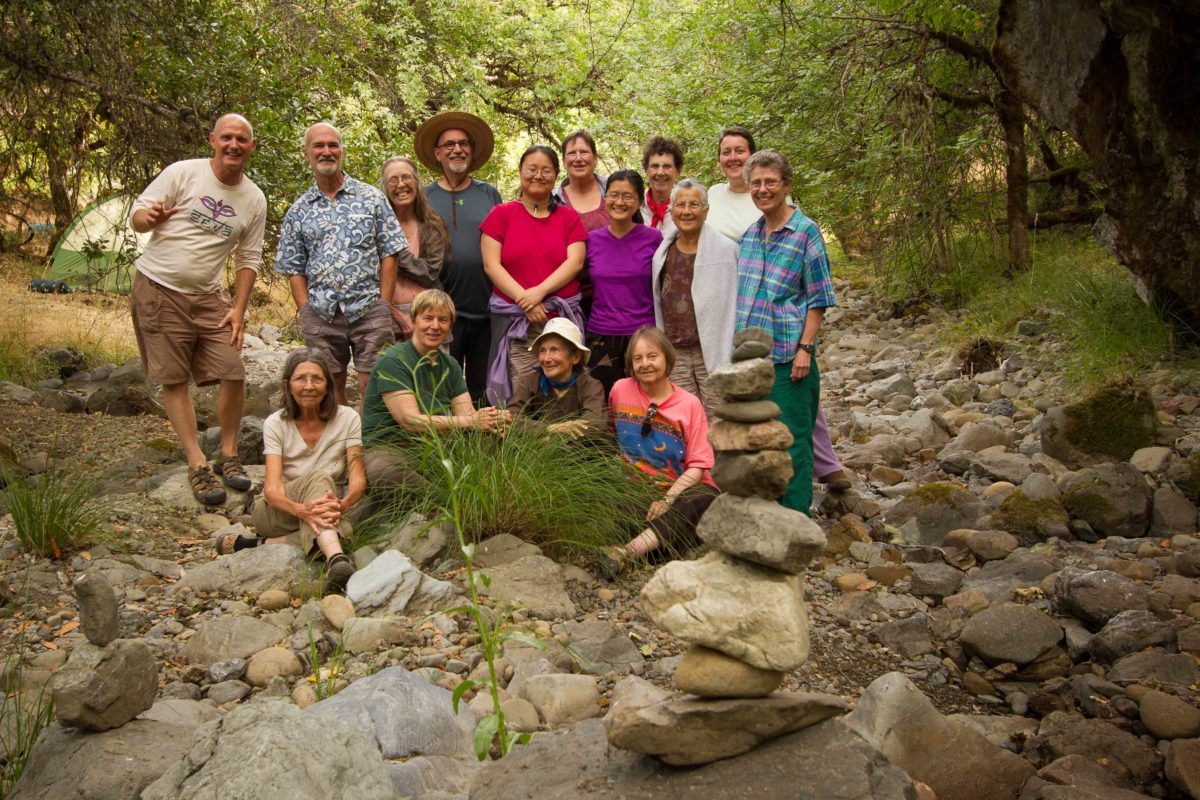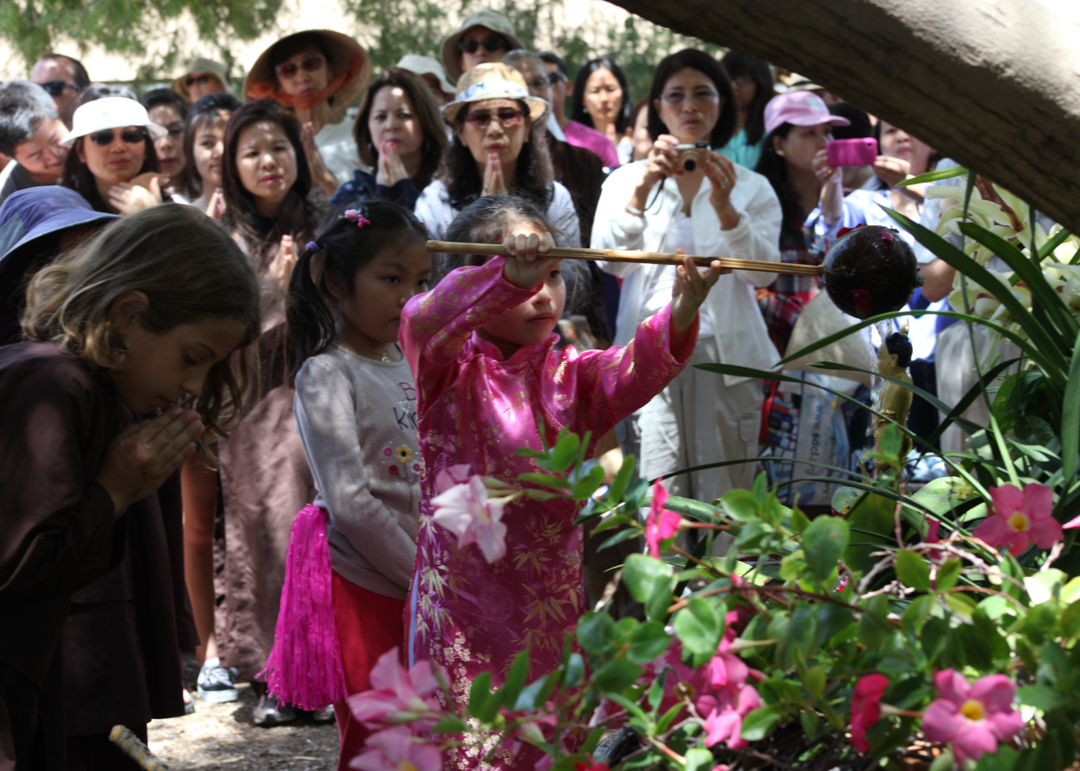
TWENTY-ONE-DAY RETREAT
In July 2014, Sangha members completed a twenty-one-day retreat, “What Happens When We Die?” at the Mariposa Retreat center near Ukiah, California. This local retreat was intended for those who were not able to travel to the Plum Village retreat. Attending the retreat were Dharma teachers, OI members, aspirants, dedicated practitioners, and the sister of an experienced retreatant who was practicing for the first time.

TWENTY-ONE-DAY RETREAT
In July 2014, Sangha members completed a twenty-one-day retreat, “What Happens When We Die?” at the Mariposa Retreat center near Ukiah, California. This local retreat was intended for those who were not able to travel to the Plum Village retreat. Attending the retreat were Dharma teachers, OI members, aspirants, dedicated practitioners, and the sister of an experienced retreatant who was practicing for the first time. We gave care in our outreach to welcome a diverse a cross-section of our Mahasangha.
Thanks to the kindness of Thich Nhat Hanh and Sister Chan Khong, we had the very good fortune and privilege of listening to the Dharma talks from the Plum Village retreat. We followed the Plum Village traditions and schedule, including morning sitting, sutra reading, touching the Earth, outdoor walking meditation, Dharma talks, silent meals, Dharma sharing, personal practice, deep relaxation, noble silence from evening until after lunch, Mindfulness Training recitations, and two lazy days (including a hammock!). We began each week with a formal Beginning Anew practice and ceremony.
Within the solid container of the Plum Village tradition, we followed our teacher’s encouragement to deepen our practice through the arts. We enjoyed workshops in poetry, songwriting, and collage; we embodied the Dharma through dance; we enjoyed a Be-In, a tea ceremony, and a “show and tell” evening.
We celebrated the summer solstice: we did walking meditation to a drought-dry creek bed with unlit candles to protect the Earth; we gave voice to the earth, fire, water, and air elements, to the animals, plants, and minerals, to the ancestors and descendants. Living in harmony with the natural world, we were joined by wild turkeys, deer, raccoons, and even a small herd of wild horses.
One morning when no Dharma talk was offered, we each picked the name of a bodhisattva out of the bell and did our best to embody that bodhisattva for some days. We enjoyed picking each of the Fourteen Mindfulness Trainings out of the bell and Nelsonsharing an impromptu four-minute Dharma presentation about that training.
In our twenty-one days together, much suffering was transformed. Interpersonal issues arose, and using our individual and collective skill to look deeply, we were able to process in a way that maintained strong harmony in the community.
Without a monastic presence, each of us had to practice diligently to be the continuation of the Plum Village retreat. We felt that we were a part of the Plum Village experience, not quite the same, and yet not different. In gratitude we offer the merit of our practice to all beings and bodhisattvas throughout space and time.
DHARMA TEACHERS SANGHA HARMONY COMMITTEE
The North American Dharma Teachers Sangha has several committees serving the Mahasangha. One, the Harmony Committee, has worked for the past four years with the help of Thay’s teachings to develop processes and documents to help nurture Sangha harmony. Each committee’s work is reviewed by the Dharma Teachers Sangha Caretaking Council, which offers the committees input, guidance, and final approval. The Harmony Committee’s work has culminated in the publication of three documents addressing Sangha harmony. The first document was the Conflict Resolution Guide, which offers practices and resources for working with disagreements in Sanghas. Some Sanghas have reported working successfully with the Guide to strengthen community bonds, even before any conflict or difficulties occur. The second document from the Harmony Committee is the Policy and Procedures for Ethical Concerns regarding Dharma Teachers. It presents guidance and process for addressing perceived ethical lapses by Dharma Teachers who are members of the North American Dharma Teachers Sangha. The Harmony Committee’s most recent document is a Sexual Harassment Policy. It has been incorporated into the Committee’s Policy and Procedures for Ethical Concerns regarding Dharma Teachers. This third document endeavors “to increase Dharma Teacher awareness and sensitivity to possible sexual harassment, minimize the risk of sexual harassment, and provide guidelines to help protect Sanghas and Dharma Teachers from the suffering caused by sexual harassment.” While neither the Dharma Teachers Sangha Caretaking Council nor its committees operate as adjudicatory bodies when addressing ethical concerns, these documents support working toward mindful inquiry and ethical resolution.
All three Harmony Committee documents are available at orderofinterbeing.org. Current Harmony Committee members are Dharma teachers Rowan Conrad, Ernestine nomoto, Jack Lawlor, Cheri Maples, Bill Menza, John Salerno-White, and Leslie Rawls. The Committee can be reached at harmony@orderofinterbeing.org.

